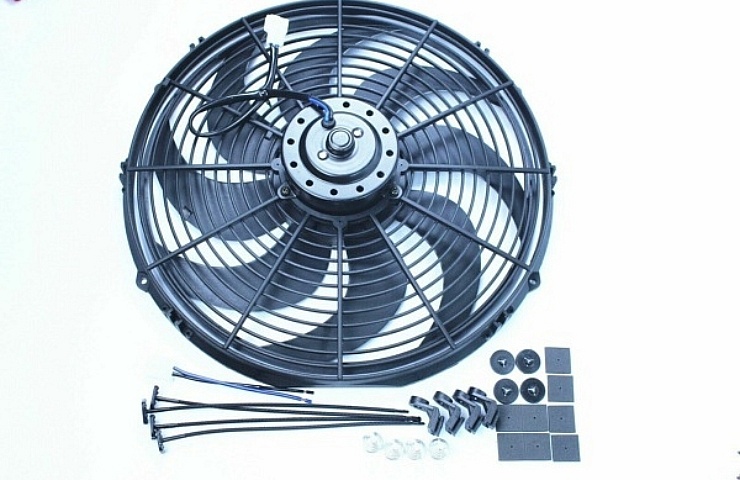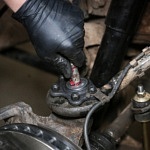Keeping your engine cool can make you feel like a cat chasing its tail. Fix one cooling element only to discover other problems. If your car is running hot—even after a radiator replacement—then it’s time to look at your radiator fan and radiator shroud. They are both critical components for your cooling system.
Shop for fans and kitsTo Push or To Pull?
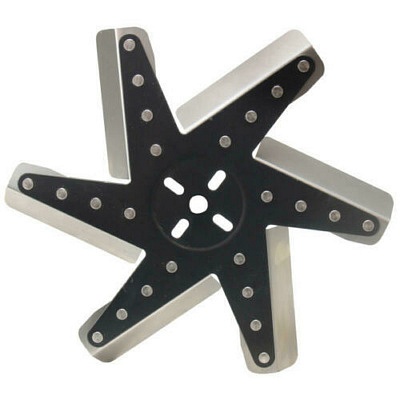
Fans come in all shapes and sizes.
A fan is essential for moving air through the radiator. Its function is to maximize the radiator’s cooling efficiency.
This function is crucial when you’re idling or don’t have the speed to generate a breeze.
Consider the two types of fans:
- A pusher fan is on the outside of the radiator. As its name indicates, this type of fan pushes the air through the radiator. A pusher fan is used when an engine swap reduces space for the fan between the engine and radiator. However, pushers can struggle to move air across the whole surface of the radiator.
- A puller fan sits between the radiator and the engine. It pulls the air through the radiator. In many cases, a puller fan is the better choice. A puller fan uses a shroud—a piece of plastic or metal—that mounts between the radiator and the fan. It mimics the size of the radiator and then narrows to a cylindrical opening.
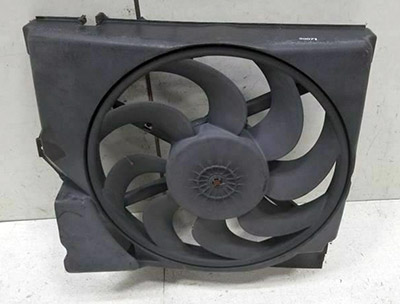
This is a typical radiator fan and shroud combination.
The shroud allows the fan to pull air through the radiator’s entire surface area, increasing its efficiency. The fan should be centered within the shroud. That tends to be the best location to draw air through the full surface of the radiator.
Troubleshooting Radiator Fan Air Flow
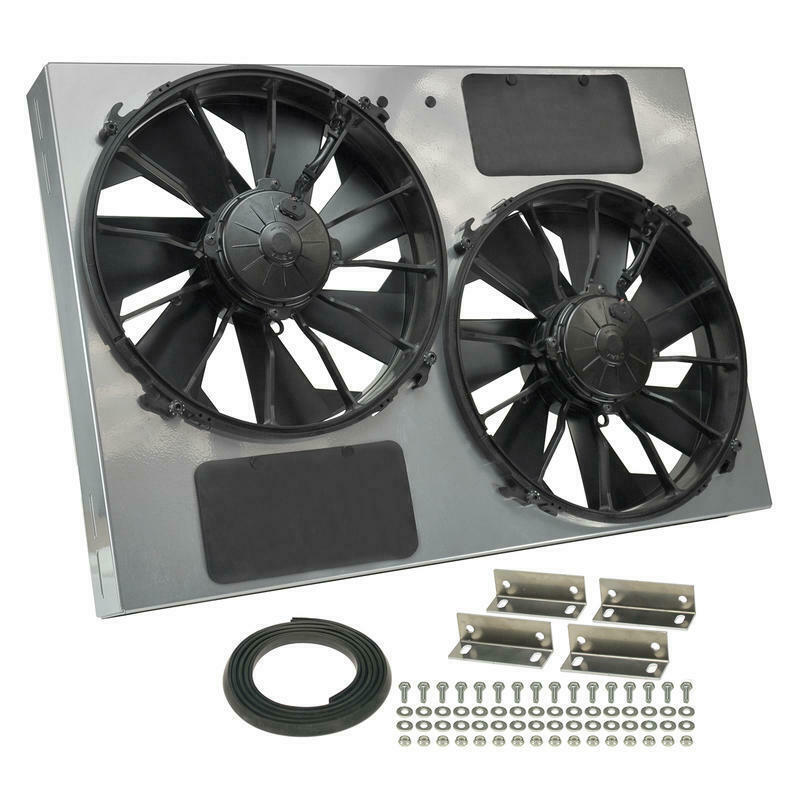
Some designs offset two fans in the shroud for more air movement.
If a puller fan is too far away from the radiator, it won’t pull the maximum amount of air. Owners can add fan spacers to help align the fan for better pulling action.
The shroud’s circular opening should allow for about an inch of extra room surrounding the fan. This space allows the components to slightly shift without affecting the way the air flows. If there’s not enough room, the fan can nick the sides of the shroud.
Modern cars also often have front air dams or spoilers that direct air into the engine and radiator. However, a parking curb or a tall speed bump can damage these dams. Check if any of these external parts need adjustment or replacing.

Some cars use lower air dams to passively channel air to the radiator.
Power for Your Radiator Fan
The car’s engine or electric system can power radiator fans. An engine-driven fan mounts in front of the engine. This configuration eliminates the electrical system as a potential point of failure. It is also a simple and effective way to pull air through the radiator.
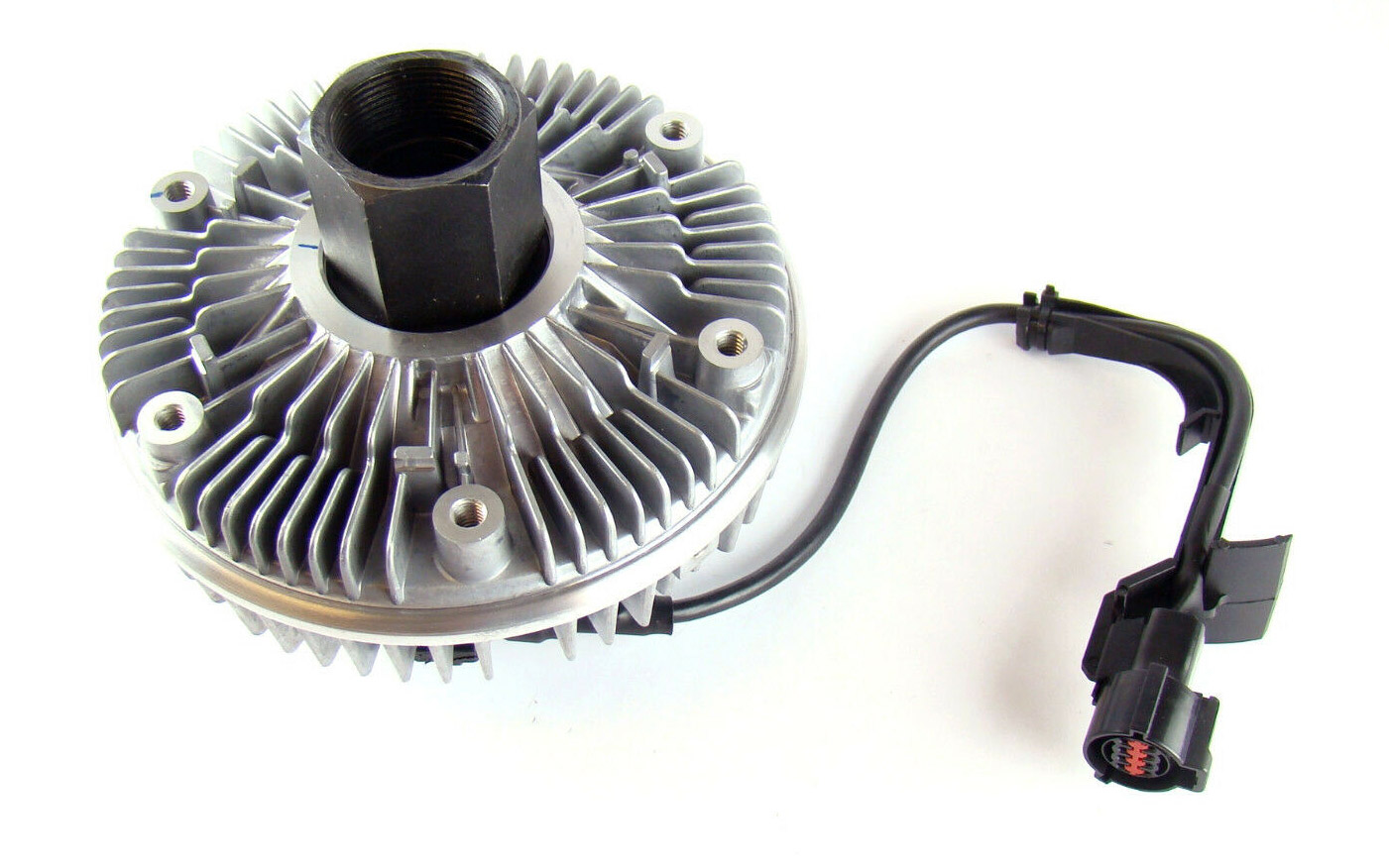
Radiator fan clutch
While an engine-driven fan has advantages, it uses a small amount of horsepower and sometimes runs when it’s not needed. To minimize loss of engine power, most traditional setups use a fan clutch.
- When the engine is relatively cool, the clutch disengages the fan so power is not wasted.
- As the engine heats up, the clutch engages to help avoid overheating.
- Even when the clutch is disengaged, the fan uses some engine power. But it’s not as much as when the system unnecessarily engages the fan to cool the engine.
The alternative is a fan powered by a separate electrical circuit. With an electrical radiator fan system, you can pinpoint when the fan runs based on the coolant’s temperature. It allows the engine’s power to be reserved for moving the automobile. But it does require special wiring to provide power to the fan.
Fitting an electric fan requires some finesse. It can be challenging to find space to wedge in an engine-driven fan—especially after an engine swap.
Regardless of how your cooling system is set up, it’s critical to make sure your radiator fans are doing their job. It’s not enough that the radiator itself is in good shape. You need to also make sure that it’s receiving the air it needs to cool things down.

